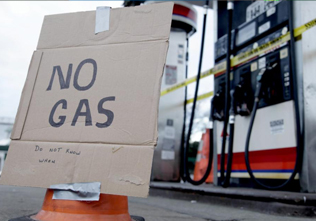A new law will now provide Massachusetts with the third US energy storage mandate. Look for storage legislation to gain favor in the upcoming years.
“Irrespective of the eventual target, Massachusetts could become the first non-West Coast state to set forth a storage goal,” said Ravi Manghani, director of energy storage at GTM Research. “It could prove to be a blueprint for other states on the East Coast that share similar challenges related to resiliency, energy costs, and renewable, and grid modernization goals.”
Massachusetts began paving the way for more far-reaching storage policies over a year ago, when the governor announced a $10 million energy storage initiative in May 2015. The initiative includes a funding commitment from the state’s Department of Energy Resources (DOER) and a two-part study from DOER and the Massachusetts Clean Energy Center to analyze opportunities to support Massachusetts energy storage companies and develop policies to encourage energy storage deployment.
Under the recently passed bill, H. 4568, DOER has until year’s end to decide whether to set a procurement target for electric companies to procure “viable and cost-effective energy storage systems” by a target date of January 1, 2020. If found appropriate, DOER would have until July 1, 2017, to adopt the procurement targets. The targets would then be re-evaluated not less than once every three years.
Under the law, a storage system must reduce greenhouse gas emissions, cut demand for peak electrical generation, avoid new investment in generation, transmission or distribution assets, or improve the reliability of the grid.
The energy bill also requires the state’s utilities to purchase power from hydroelectric plants and from both onshore and offshore wind farms. The law calls for long-term contracts for 1,600 MW of offshore wind power and 1,200 MW of hydropower or other renewables.
According to UtilityDIVE’s Peter Maloney, “The new energy legislation also set out new ownership models for energy storage, stating that it may be owned by an electric distribution company. In many restructured states, storage is classified as generation, putting it out of reach of distribution only utilities.”
That provision could put Massachusetts on “the cutting edge” in energy storage, said Jacqueline DeRosa, vice president of emerging technologies at Customized Energy Solutions, one of the companies working with Massachusetts agencies on its Energy Storage Initiative.
Looking at West Coast Models
Among drivers for the viability of commercial and industrial energy storage is the level of demand charges for those customers, Manghani said. Eversource, the state’s largest utility, has peak demand charges that offer an 11% return on 1-hour energy storage systems for both small and large commercial customers, and a 7% internal rate of return on 2-hour systems, Manghani wrote in the report.
California became the first state with an energy storage mandate with the passage ofA.B. 2514 in 2010 and its implementation by the state’s Public Utilities Commission in 2013.
In Oregon, H.B. 2193, passed in June 2015, requires Portland Gas & Electric and PacifiCorp, the state’s main electricity providers, to have a minimum of 5 MWh of energy storage in service by January 1, 2020. Oregon’s Public Utilities Commission is still working out the details of how the law will be implemented.
Once again, many industry experts look for storage legislation to gain favor in the upcoming years.








